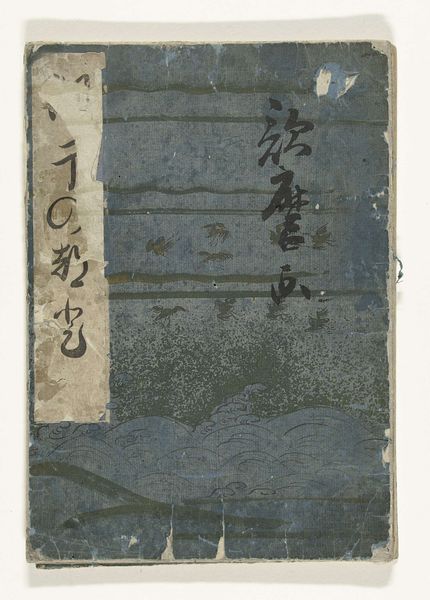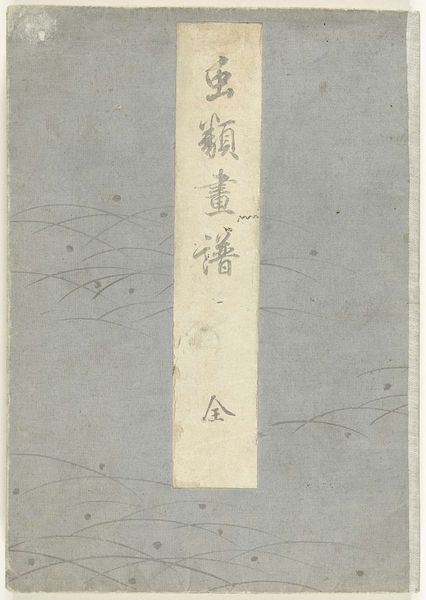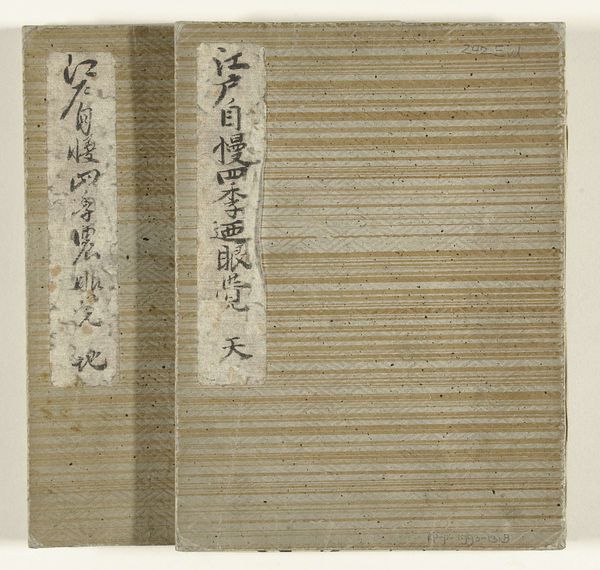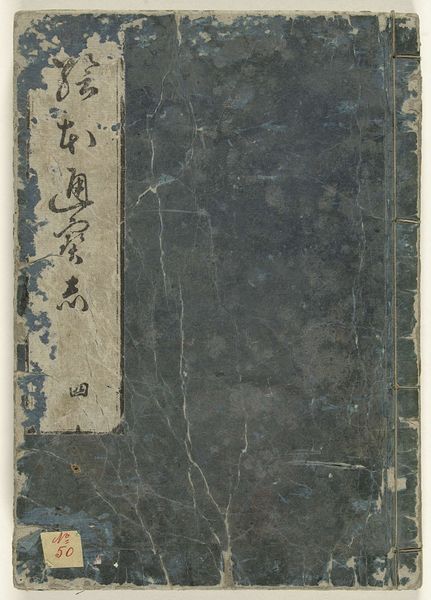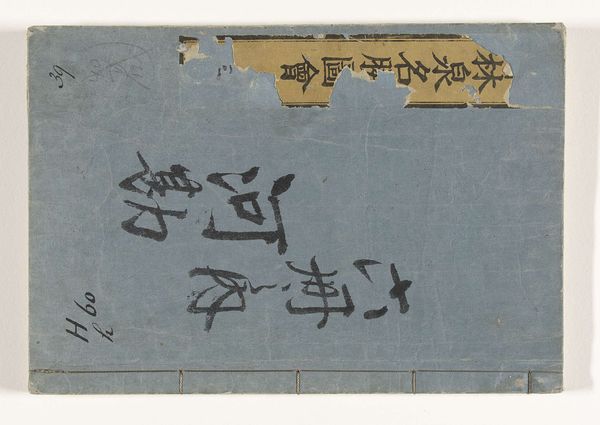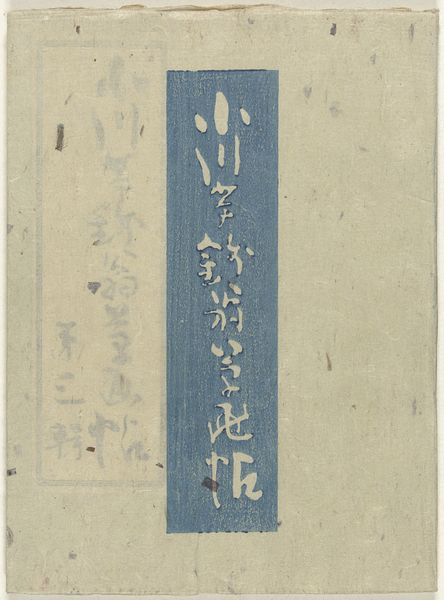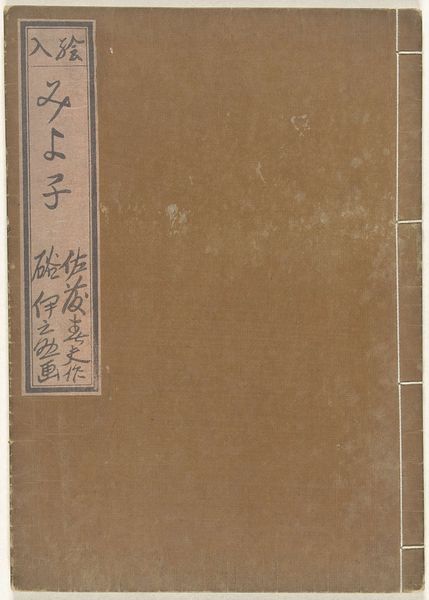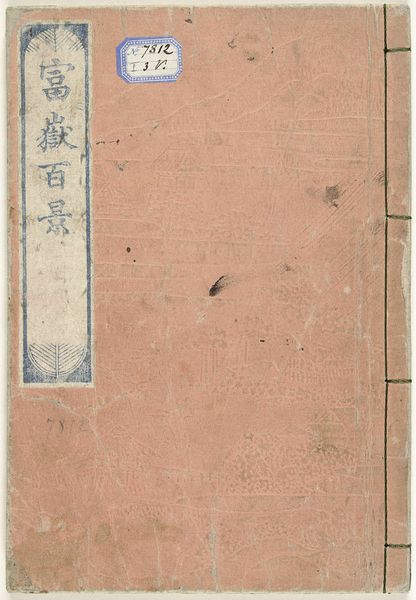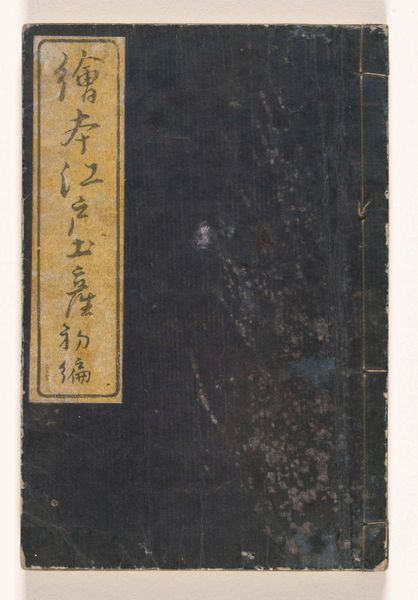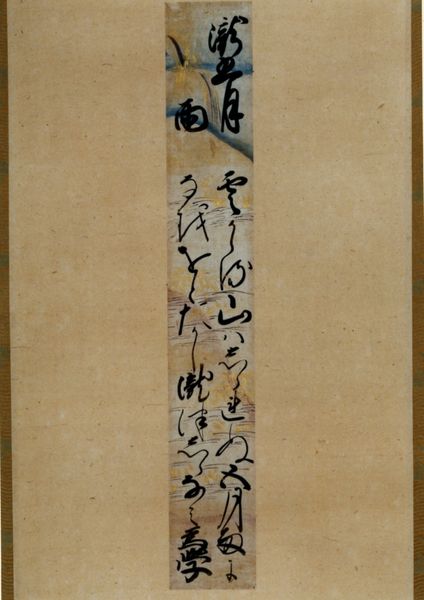
drawing, print, paper, ink, woodblock-print
#
drawing
# print
#
asian-art
#
ukiyo-e
#
paper
#
ink
#
woodblock-print
Dimensions: height 248 mm, width 180 mm
Copyright: Rijks Museum: Open Domain
Curator: Standing before us is "Spiegel van meesterlijke ambachtslieden," or "Mirror of Master Craftsmen," created in 1803 by the famed Japanese artist, Katsushika Hokusai. This artwork, rendered in ink as a woodblock print on paper, resides here at the Rijksmuseum. Editor: Immediately, I'm drawn to the muted tones. There's an almost ghostly quality to it. The faint, repeated plant-like motifs...they create a dreamlike field across the cover. What story do these delicate images suggest? Curator: It's interesting you pick up on that. Ukiyo-e prints, like this, served a significant social function. They provided visual representations of contemporary life and ideals. A series documenting the skills of different craftsmen and tradesmen speaks to a societal interest in celebrating labor. Think of the influence that has on the art world's place within public discourse. Editor: Precisely. Each artisan, through visual shorthand, would become an archetype, carrying layers of meaning beyond just their craft. Perhaps there's an allusion to earlier traditions by picturing craftsmen like garden motifs – where their craft would be an ecosystem itself? The symmetry alone tells me the intention is thoughtful. Curator: That’s a sharp observation. This book aimed at broader appeal. The book, though not as obviously vibrant as other Ukiyo-e, was meant to offer accessible insight. Its market circulation underscores the burgeoning public sphere for art appreciation, breaking free from exclusive aristocratic circles. Editor: Absolutely. These quiet tones also enhance that accessibility. By stripping away the flamboyance we see how daily labor, celebrated symbolically, gets elevated within a common aesthetic. I am left pondering the subtle cultural power of these repeated forms, so humbly presented. Curator: I concur. Through thoughtful dissemination and presentation, "Mirror of Master Craftsmen" provides invaluable context to Japanese visual culture, reflecting societal values surrounding art's production, accessibility and societal role. Editor: Ultimately, "Spiegel van meesterlijke ambachtslieden" compels one to consider symbols. As we depart from this book, it becomes evident of imagery's persistent resonance, inviting reflections that evolve through each observer across time.
Comments
No comments
Be the first to comment and join the conversation on the ultimate creative platform.
